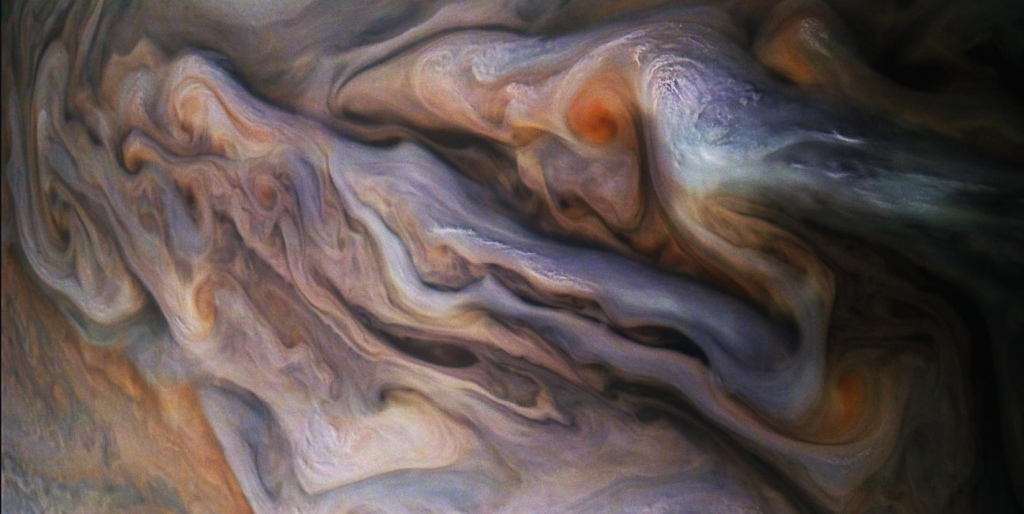Jupiter is the biggest planet in our solar system, and NASA just shared one of the most breathtaking photos it has ever captured of the planet. While the planet is known for its Great Red Spot, the snapshot posted this weekend focuses on some of the planet’s other storms—storms bigger than anything you’d ever see on Earth.
Videos by ComicBook.com
The picture, shared Saturday morning, looks like a painting with flowing clouds and storms splattered across the canvas that is the atmosphere of the planet. As the space agency says, the white storms captured in the photo can be storms generating winds upwards of 335 miles per hour. In comparison, a Category 5 hurricane sustains winds of at least 157 miles an hour.
“Jupiter is strapped with ‘belts’ of white and red, that wrap around the planet. Traveling both east and west, why these belts are distinct is something mystery to scientists, one possibility is that the ammonia gas in the atmosphere travels up and down in alignment with the planets jet streams,” NASA says in its caption of the photo.
It adds, “Juno’s prime mission of measuring and studying Jupiter’s atmosphere and magnetic structure was completed in 2021, but it will continue to measure the planet’s unique structure until at least 2025. This image was color enhanced by citizen scientists Gerald Eichstädt and Sean Doran.”
Managed by NASA’s Jet Propulsion Laboratory, Juno first launched in 2011 and entered Jupiter’s orbit nearly five years later. It’s currently expected to continue its mission at least through September 2025.
“Juno’s principal goal is to understand the origin and evolution of Jupiter. Underneath its dense cloud cover, Jupiter safeguards secrets to the fundamental processes and conditions that governed our solar system during its formation,” NASA’s official Juno website reads. “As our primary example of a giant planet, Jupiter can also provide critical knowledge for understanding the planetary systems being discovered around other stars.”









